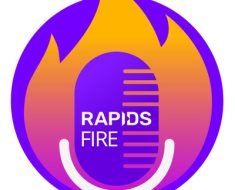In the rapidly evolving field of Artificial Intelligence (AI), Large Language Models (LLMs) are at the forefront of innovation, offering unprecedented opportunities across a range of sectors. From materials science to healthcare, these models are revolutionizing the way we process information and make decisions. Their creative potential can be unleashed through a process known as ‘prompt engineering’, which involves the careful crafting of prompts to direct the LLM’s output towards a desired goal.
The Science behind Large Language Models
Large Language Models, such as GPT-3.5, GPT-4, ChatGPT, and Bard, are neural network-based deep learning algorithms. They are trained on vast volumes of text data, enabling them to perform complex tasks involving natural language understanding and processing. These tasks can range from generating creative content to classifying materials based on their properties. The beauty of these models lies in their ability to handle sparse datasets and process complex compositions, overcoming the traditional challenges faced in data analysis.
Mastering Prompt Engineering
While LLMs offer immense potential, unlocking this potential requires a blend of linguistic and psychological skills. This is where prompt engineering comes into play. Essentially, it involves giving clear and precise instructions to the LLM to guide its output. This is an iterative learning process, where each interaction with a prompt enhances future interactions, enabling the model to generate increasingly accurate and useful results. The power of prompt engineering is evident in various fields, including marketing, coding, healthcare, finance, and legal services, where it is used to generate creative content and boost productivity.
Large Language Models in Materials Science
A particularly exciting application of LLMs is in the field of materials science. A workflow has been developed for material text feature label classification using data generated by large language models. The process involves defining the material classification problem, designing prompts via prompt engineering, fine-tuning a BERT model, and applying the model to explore new materials or study composition-structure-property relationships. This approach has proven particularly effective in the classification of metallic glasses, demonstrating the potential of AI for materials discovery and design grounded in natural language processing and prompt engineering.
Application in Healthcare
LLMs also show promise in the realm of healthcare, particularly in processing complex clinical data and extracting meaningful information with minimal training data. Studies have shown that GPT-3.5 and GPT-4 achieved improved performance with task-specific prompts, demonstrating the effectiveness of prompt engineering. However, it’s crucial to note that further refinement and development are still needed for optimal performance in clinical settings.
Ethical Concerns and Biases
While LLMs and prompt engineering offer exciting potential, it’s important to be aware of the ethical concerns and biases associated with these models. As they are trained on large volumes of text data, they can inadvertently perpetuate biases present in the source data. Therefore, prompt engineering must be conducted with care, and efforts must be made to minimize and address these biases.
With the right approach, the blend of linguistic and psychological skills in large language model prompting can open up new horizons in various fields. The potential of large language models is vast and still largely untapped, offering exciting prospects for future research and development.




